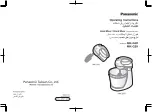
CONCRETE MIXER MOD.: PO 500
GB
Operating, maintenance, spare parts manual Rèv. 3 of 12/10/18
Page
20 di 40
5.7 Putting into operation
Before putting the machine into operation, especially the very first time,
or when it is installed on a new work place, carry out the following preliminary checks:
- Check the good positioning and levelling of the machine inside the work area;
- Check the good working of all the transmission and moving parts of the machine;
- Check the work surface for residual materials (packing, etc.), remove foreign bodies from the transmission
and moving parts; - Make sure there are no damaged or locked elements; - Check the tensioning of the feed belts;
- Check the machine elements for complete assembling and clamping; - Check the area of respect and the work areas;
- Check the protections and the protection device for good fixing and locking; - Check the oil level;
- Check the caution/danger signs on the machine for good visibility. - Connect the water tank to the water supply unit;
- Ensure good connection of electric supply and grounding; - Check the compatibility between electric installation and
machine (voltage, phases, frequency, power, protection device); - Check the direction of rotation of the electric motor
(caution: wrong direction of rotation may damage the hydraulic pump); - Carry out a work cycle without material to check
correct adjustments and good machine operation; - Check the operation of the electric control devices.
5.8
Training
Before starting use the machine, readthis instruction manual and understand
how to use the machine in a safe way.
6. ADJUSTMENTS
6.1 Adjusting the machine
At first operation on the construction site, the machine does not need any
adjustments. Ensure good assembling and connections: - see paragraph 5.6 Putting into operation
Never carry out adjustments with the machine running/operating.
Follow the safety instructions shown in chapter SAFETY PRECAUTIONS.
Every single adjustment and/or modification of the safety/work parameters set on the machine, wich has not
been authorised by the technical personnel of the company SILLA or wich is not stated in this instruction manual,
may influence the quality of the product and injure the operator’s healt. The company SILLA decline any
responsibility for liability, performances and safety of the machine in case of modification/safety parameters.
6.2 A
djusting the pressure of the oil-hydraulic unit
If the skip does not go up when the bucket is full of material, with a signle head
wrench unscrew the cap nut of the hydraulic distributor and with a special wrench
turn for a revolution the screw as shown. Then reassemble carefully the cap and
check the unit for possible oil lacks during operation. Repeat the same procedure,
if the skip does not go up after acting on the distributor lever. The same operation
have to be applied if the drum doesn’t turn correctly and the unloading of the
material is not possible.
6.3
Adjustment of belts tension
If the belts are not in
tension, first of all it’s necessary to check which got loosen, the belt of the
pump or the one of the drum. Remove protection cover, check the situation
and the condition of the belts and pulleys to make the right maintenance.
6.3.1 Tension of the belts between engine and pump support
Unscrew the engine screw
2
and slide the engine in the sense of the arrow
3
to tighten the belt
1
between engine ( diesel
or electric) and the pump support. Grip the engine screw
2
. If belts have cracks or defects especially on the in side,
replace them. Otherwise fit the belt once again and tighten it
as already said. Fix again the protection cover. Especially
with new belts, check once again their tension during the first
days of work.
6.3.2
Tension of belts of drum rotation.
Unscrew screws
5
and slide pump support through screw 6
following the direction of arrow
3
, to tighten belts for the rotation
of the drum
4
. Grip screws
5
once again. Unscrew screw of
engine
2
and tighten belts moving the engine following the direction
of arrow
3
.
WARNING!
The drum doesn’t move if the skip is up.
You have to move the skip down and after turn the drum to unload the mix.
7. USE
7.1 Controls and location areas
Electric motor only. Electric control panel equipped with the following commands:
1) Black motor START push buttons, for both directions
of rotation “mixing-discharge”. 2) Red blade motor STOP push-button.
The control panel has also an electric plug, which can be isolated in case of emergency. Start and stop buttons are on the
electric control box. The commands on the control panel are for the direction of rotation of the drum, mixing or discharge, start
and stop of the concrete mixer. The bucket is controlled by the oil-hydraulic distributor (lifting-lowering).The overturning of the
drum, to unload the mixed material, is controlled by an oil-dynamic distributor. The drum or mixing tank can not be overturned
if the bucket is not on the ground. Each new mixing, before lifting the bucket, move the drum in vertical position, otherwise
















































